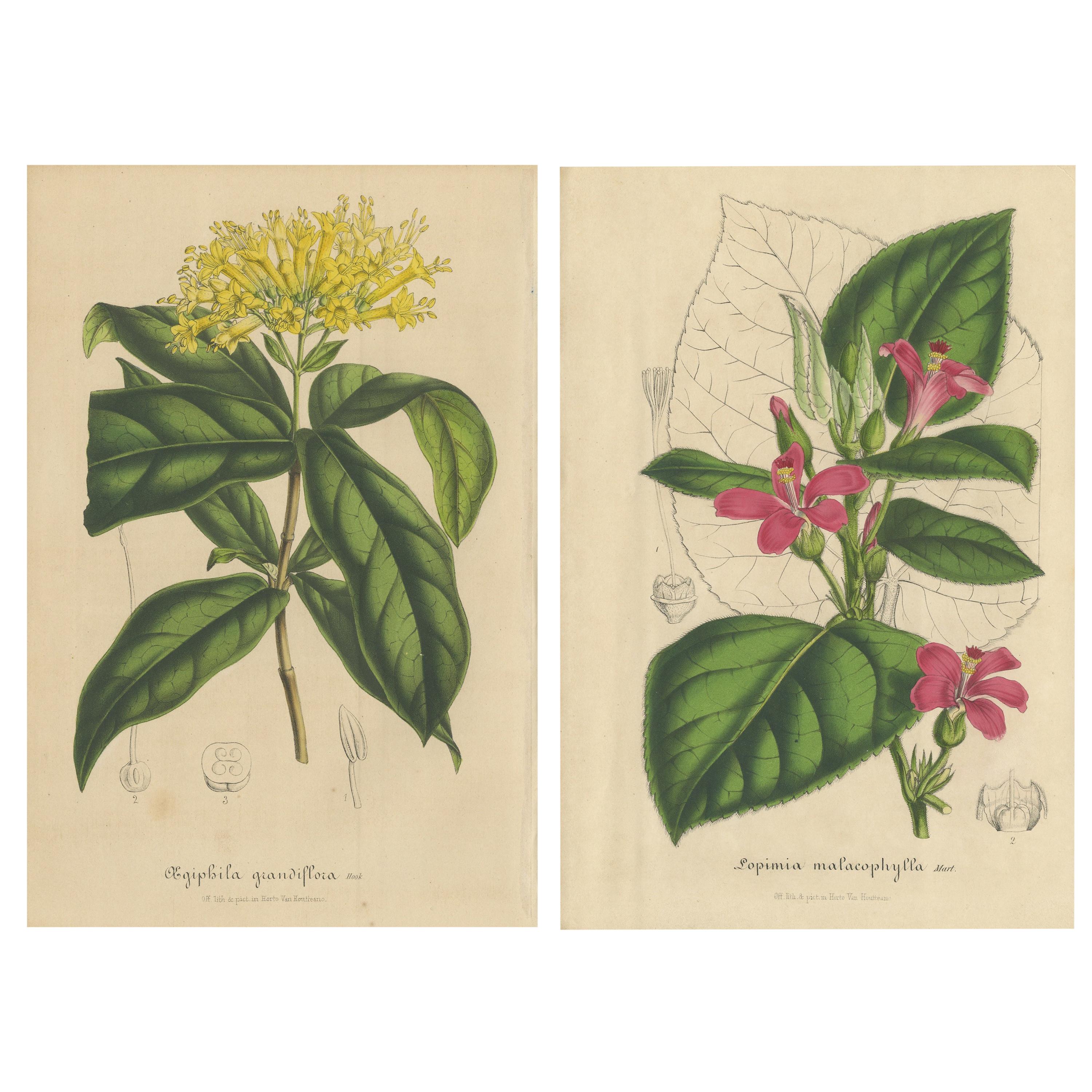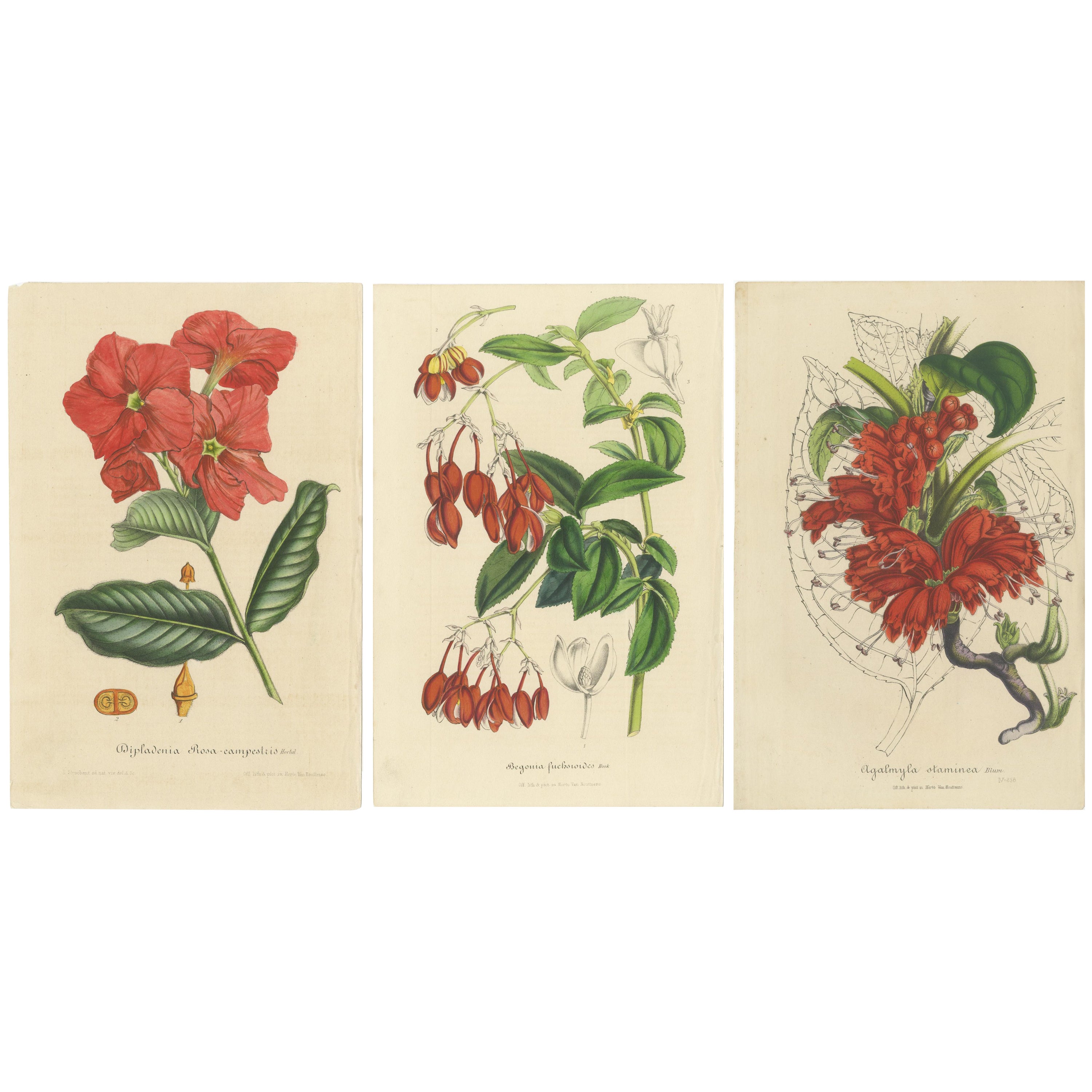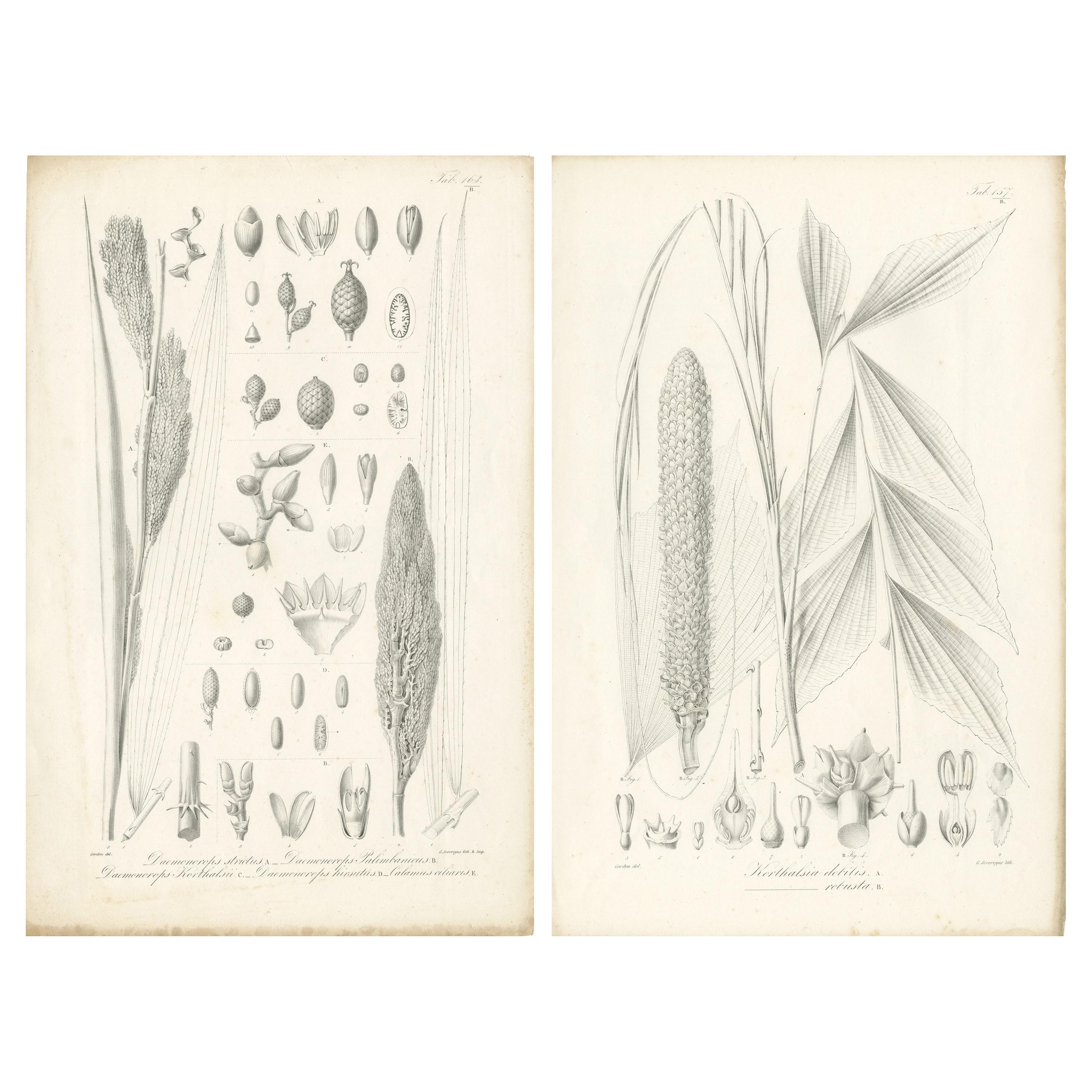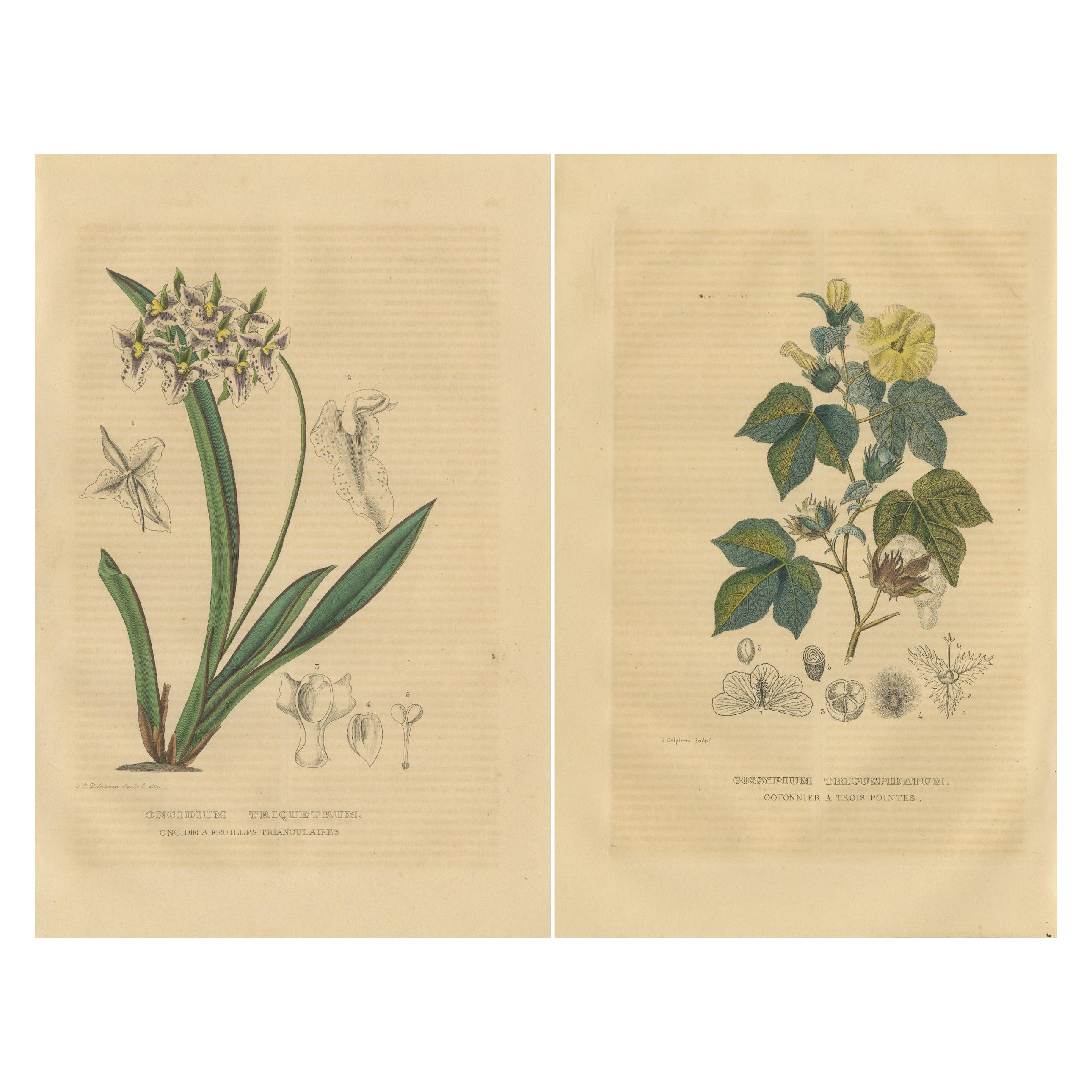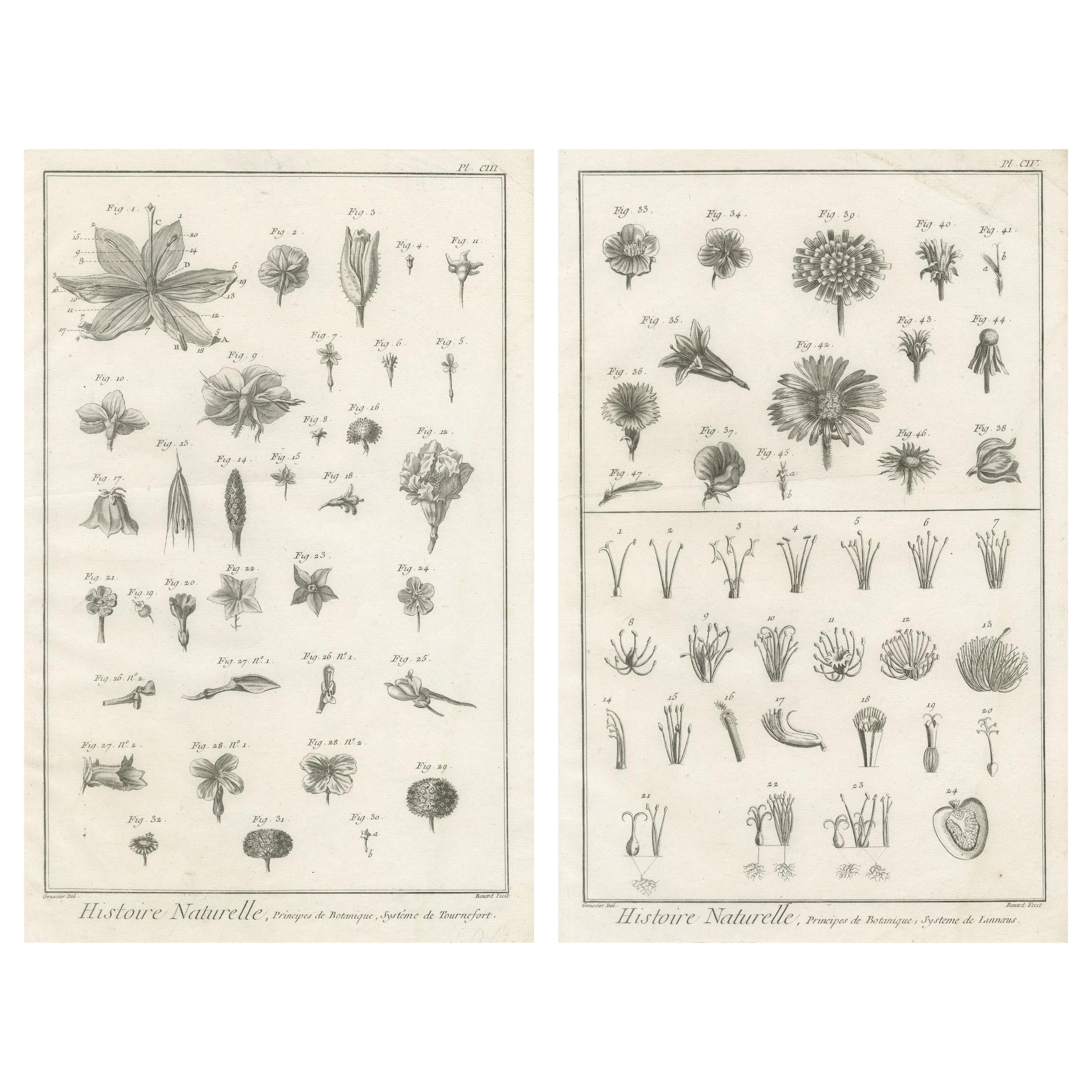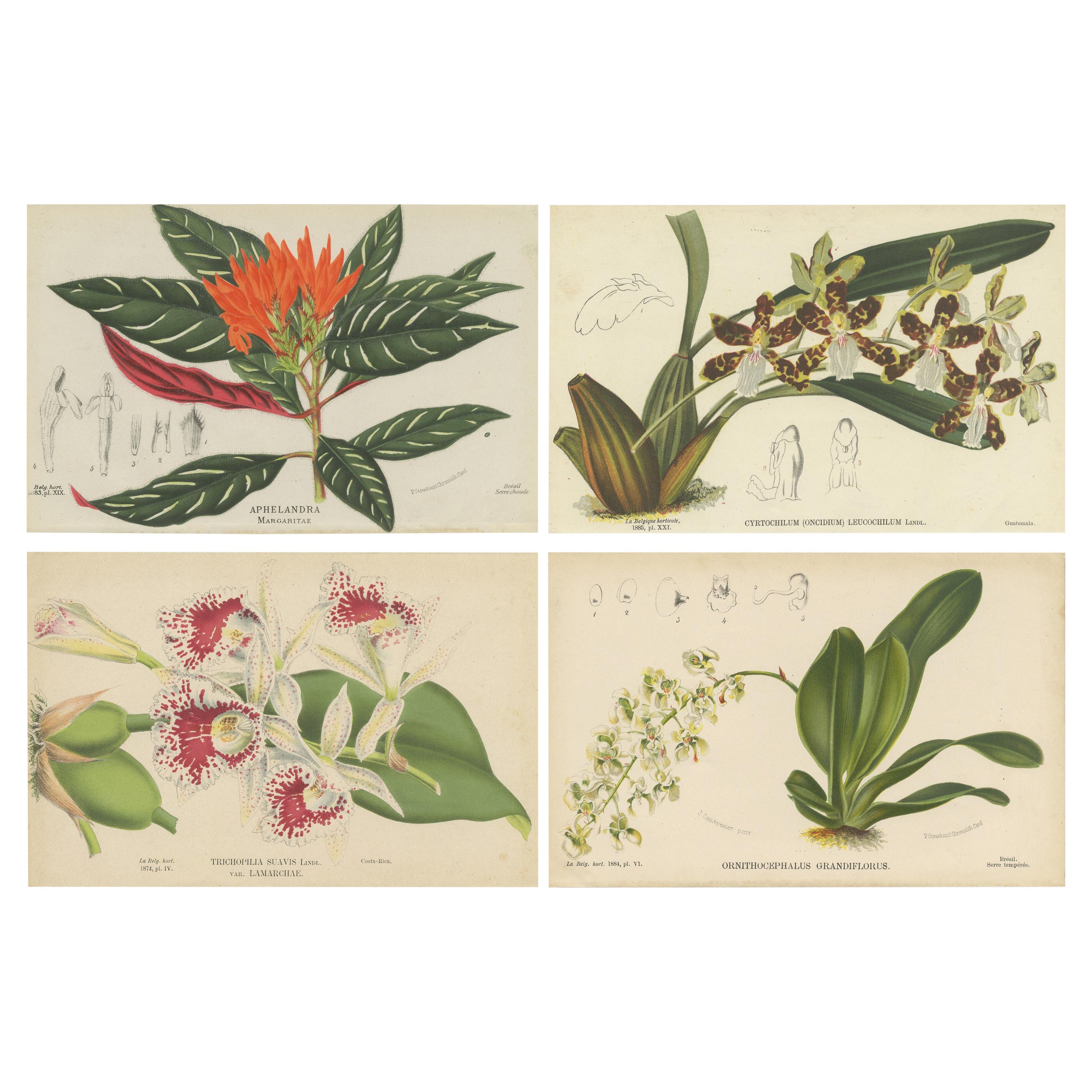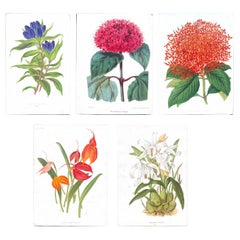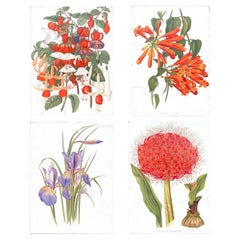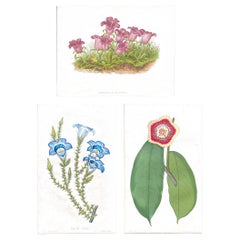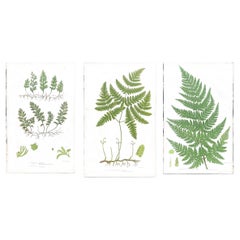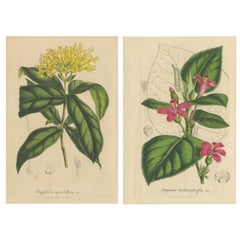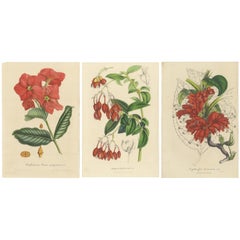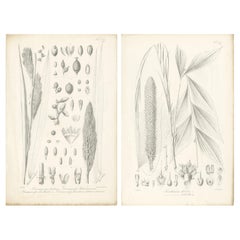Items Similar to Set of Two Rare Botanical Engravings by D’Orbigny — 1849
Want more images or videos?
Request additional images or videos from the seller
1 of 13
Set of Two Rare Botanical Engravings by D’Orbigny — 1849
$320per set
£241.50per set
€276.48per set
CA$451.31per set
A$495.48per set
CHF 258.49per set
MX$5,995.97per set
NOK 3,239.79per set
SEK 3,052.74per set
DKK 2,063.82per set
About the Item
Set of Two Rare Botanical Engravings by D’Orbigny — Dictionnaire Universel d’Histoire Naturelle, Paris, 1849
An exquisite pair of original hand-colored botanical engravings from the iconic Dictionnaire Universel d’Histoire Naturelle, published in Paris, 1849 under the direction of Charles Dessalines d’Orbigny. These works feature plants of rare ornamental beauty, illustrated with the scientific precision and refined artistry that defined 19th-century French natural history publications.
Included in this set:
1. Aechmea discolor — A vivid bromeliad of tropical origin with rosette foliage and red-orange inflorescence. Surrounding it are detailed anatomical studies of floral parts and reproductive structures, highlighting the botanical value of the plate.
Title reads: “Broméliacées. Aechmée discolor (Aechmea discolor, alt. Broug.)”
Engraved by: Fournier; Printed by: Pellion imp.
2. Ceropegia Cumingiana — A fascinating climbing plant from the milkweed family (Asclepiadaceae), with green veined leaves and yellow-purple pitcher-shaped flowers. The illustration emphasizes the unique structure of its corona and pollinia, often admired by collectors and botanists.
Captioned: “Ceropegia Cumingiana D.ne. Off. tulit & pict. in Horto Van Houtte altic.”
Both plates combine artistic elegance with scientific rigor, making them exceptional specimens of early botanical publishing.
Artist: Unknown (published under the direction of d’Orbigny)
Printer: Pellion imp.
Publication: Dictionnaire Universel d’Histoire Naturelle, 1849
Medium: Copperplate engraving with hand coloring
Condition: Very good antique condition; mild age toning and slight margin wear
Framing: Unframed
- Dimensions:Height: 9.06 in (23 cm)Width: 5.91 in (15 cm)Depth: 0.04 in (1 mm)
- Sold As:Set of 2
- Materials and Techniques:
- Place of Origin:
- Period:
- Date of Manufacture:1849
- Condition:Minor losses.
- Seller Location:Fukuoka, JP
- Reference Number:1stDibs: LU10055245466732
About the Seller
No Reviews Yet
Vetted Professional Seller
Every seller passes strict standards for authenticity and reliability
Established in 2023
1stDibs seller since 2024
11 sales on 1stDibs
Typical response time: 12 hours
- ShippingRetrieving quote...Shipping from: Chiang Mai, Thailand
- Return Policy
Authenticity Guarantee
In the unlikely event there’s an issue with an item’s authenticity, contact us within 1 year for a full refund. DetailsMoney-Back Guarantee
If your item is not as described, is damaged in transit, or does not arrive, contact us within 7 days for a full refund. Details24-Hour Cancellation
You have a 24-hour grace period in which to reconsider your purchase, with no questions asked.Vetted Professional Sellers
Our world-class sellers must adhere to strict standards for service and quality, maintaining the integrity of our listings.Price-Match Guarantee
If you find that a seller listed the same item for a lower price elsewhere, we’ll match it.Trusted Global Delivery
Our best-in-class carrier network provides specialized shipping options worldwide, including custom delivery.More From This Seller
View AllBignonia venusta – Antique Botanical Chromolithograph, 1880s
Located in Fukuoka, JP
A striking original botanical print from the 1880s, featuring Bignonia venusta, also known as flame vine or orange trumpet vine. This brilliantly colored illustration captures the dr...
Category
Antique 19th Century French Prints
Materials
Paper
Original 1880s Botanical Print of Hæmanthus Kalbreyeri — Vibrant Antique Chromol
Located in Fukuoka, JP
A striking original chromolithograph from the 1880s, this botanical print features the dramatic Hæmanthus kalbreyeri, also known as the blood lily. Characterized by its intense red s...
Category
Antique 19th Century French Prints
Materials
Paper
Campanula Allionii – Original Antique Botanical Print, France, 19th Century
Located in Fukuoka, JP
Hand-colored lithograph from the 1800s
A finely detailed and richly colored 19th-century botanical print depicting Campanula Allionii, a charming alpine bellflower native to the sou...
Category
Antique 19th Century British Prints
Materials
Paper
Set of Three Antique Botanical Fern Prints by Anne Pratt, Hand-Colored, 1855
Located in Fukuoka, JP
A vibrant trio of original hand-colored lithographs by celebrated British botanical illustrator Anne Pratt, published in 1855 as part of her important work “The British Ferns”. These...
Category
Antique 19th Century British Prints
Materials
Paper
Original Antique Botanical Lithograph of Pelargoniums, 1851–“Capitaine Lechaix”
Located in Fukuoka, JP
Published in L’Horticulteur Français
A rare and richly colored antique botanical lithograph depicting six varieties of pelargoniums, including the boldly patterned “Capitaine Lechai...
Category
Antique 19th Century French Prints
Materials
Paper
Set of Four Antique Botanical Fern Prints by Anne Pratt, Hand-Colored, 1855
Located in Fukuoka, JP
A rich and decorative set of four original hand-colored lithographs by Anne Pratt, a leading botanical illustrator of the Victorian era. These detailed prints were published in 1855 ...
Category
Antique 19th Century British Prints
Materials
Paper
You May Also Like
Set of 2 Antique Botany Prints, Aegiphila, Malacophylla by Van Houtte '1848'
Located in Langweer, NL
Set of two antique botany prints titled 'Aegiphila grandiflora - Lopimia malacophylla'. It depicts a species of aegiphila and species of malacophylla. These prints originate from vol...
Category
Antique Mid-19th Century Prints
Materials
Paper
$168 Sale Price / set
20% Off
Exquisite Botanical Illustrations from Curtis’s Botanical Magazine (1847)
Located in Langweer, NL
These beautiful hand-colored botanical illustrations, drawn and lithographed by the renowned artist Walter Hood Fitch, were featured in Sir William Jackson Hooker's *"Curtis's Botanical Magazine,"* published in London in 1847. Fitch was one of the most prolific and skilled botanical illustrators of the 19th century, known for his ability to capture the intricate details and vibrant hues of the plants he depicted.
Sir William Jackson Hooker, a famous British botanist and the director of the Royal Botanic Gardens, Kew, commissioned these illustrations as part of his work to document newly discovered plants from around the world. The *Curtis’s Botanical Magazine* has been published since 1787 and remains one of the longest-running botanical periodicals.
Detailed Descriptions of Each Plant
#### 1. **Dipladenia Rosa-campestris** (*Hortul. ex Veitch*)
- **English Name**: Rose Dipladenia
- **Description**: This illustration showcases *Dipladenia rosa-campestris*, a striking flowering plant known for its showy pink to deep red trumpet-shaped flowers. Native to tropical regions of South America, particularly Brazil, *Dipladenia* belongs to the family Apocynaceae and is prized in horticulture for its vibrant blooms and ability to climb. Fitch's illustration emphasizes the waxy leaves and the vivid color of the petals, bringing the plant to life on the page.
#### 2. **Begonia fuchsioides** (*Hook.*)
- **English Name**: Fuchsia-flowered Begonia
- **Description**: The *Begonia fuchsioides* is depicted with its characteristic red, pendulous flowers, which closely resemble the blooms of fuchsia plants. This species of Begonia is native to tropical regions and is popular for its delicate, bell-shaped flowers and glossy leaves. Fitch’s attention to the arrangement of the leaves and the contrast between the flowers' vibrant red and the soft green leaves provides a lifelike representation of this exotic plant.
#### 3. **Agalmyla staminea** (*Blume*)
- **English Name**: Staminate Agalmyla
- **Description**: This illustration captures the unique red tubular flowers of *Agalmyla staminea*, a plant native to Southeast Asia. The species is part of the Gesneriaceae family and is known for its bright, showy flowers that grow in dense clusters. Fitch’s careful rendering of the plant’s leaves and the intricate veining, along with the vibrant red flowers, highlights his talent for bringing the botanical subject to life with both scientific accuracy and artistic flair.
### About the Makers
#### **Walter Hood Fitch** (Artist and Lithographer)
Walter Hood Fitch (1817–1892) was one of the most influential botanical artists of the 19th century, working primarily with Sir William Hooker and later his son, Joseph Dalton Hooker, at Kew Gardens. He produced thousands of illustrations for various botanical publications, including *Curtis’s Botanical Magazine*, where he was responsible for the majority of its plates from 1834 to 1877. Fitch’s mastery of lithography allowed him to create richly detailed and accurate depictions of plants, with a particular talent for illustrating both the botanical structure and the vibrant colors of flowers.
#### **Sir William Jackson Hooker** (Director and Editor)
Sir William Jackson Hooker (1785–1865) was a prominent British botanist and the director of the Royal Botanic Gardens, Kew. Under his leadership, Kew Gardens expanded its collection of plants from around the world, and Hooker was instrumental in promoting the scientific study and illustration of these species. As the editor of *Curtis’s Botanical Magazine*, Hooker collaborated with Fitch to document and share the beauty and diversity of plants with the scientific community and the public.
### The Lithographic Technique
Lithography, particularly chromolithography, was a crucial innovation in botanical illustration. Fitch was skilled in the traditional method of lithography, where an image was drawn onto a stone plate with a greasy substance and then inked for printing. Hand-coloring was often applied afterward to bring the prints to life, as seen in these illustrations. This method allowed for highly detailed, accurate representations of plants and their botanical features, making it invaluable for both scientific study and aesthetic appreciation.
### Conclusion
These prints from *Curtis’s Botanical Magazine* reflect the height of botanical art in the mid-19th century. The combination of Walter Fitch...
Category
Antique 1840s Prints
Materials
Paper
$414 Sale Price / set
20% Off
Set of 2 Botany Prints of Palm Species by Blume 'c.1840'
Located in Langweer, NL
Set of two antique prints:
1) Korthalsia debilis, Korthalsia robusta (flowering plants in the palm family)
2) Daemonorops strictus, Daemonorops Palimbanicus etc. (palm species)
Thes...
Category
Antique Mid-19th Century Prints
Materials
Paper
$289 Sale Price / set
20% Off
Orchid & Cotton Elegance: A Botanical Legacy in Bloom - Old Engravings of 1845
Located in Langweer, NL
The title encapsulates the charm and detailed beauty of the two plants, suitable for an audience that appreciates botanical art and history.
The images have been cropped and assembl...
Category
Antique 1840s Prints
Materials
Paper
$231 Sale Price / set
20% Off
Free Shipping
Pair of Antique Botanical Engravings, Tournefort & Linnæus Systems, ca. 1770
Located in Langweer, NL
Pair of Antique Botanical Engravings, Tournefort & Linnæus Systems, ca. 1770
A rare pair of original copperplate engravings from Denis Diderot and Jean le Rond d’Alembert’s monument...
Category
Antique 1770s French Prints
Materials
Paper
Set of 4 Antique Botany Prints, Ornithocephalus Grandiflorus 'c.1880'
Located in Langweer, NL
Set of four antique botany prints titled:
1) Ornithocephalus Grandiflorus
2) Trichopilia Suavis
3) Cyrtochilum (Oncidium) Leucochilum
4) Aphelandra Margaritae
These prints o...
Category
Antique Late 19th Century Prints
Materials
Paper
$240 Sale Price / set
20% Off
More Ways To Browse
Buncheong Ceramics
Cabinets Anglo Indian Rosewood
Carrera Dining Table
Carved Bone Elephants
Carved Censer
Carved Indian Chest
Carved Jade Figure
Carved Shell Cabinet
Cased Fish
Cast Iron Horse Sculpture
Cat Sculpture Blue
Ceramic Blue Glazed Bird
Ceramic Canister
Ceramic Pigeon
Charleston Used Office Furniture
Chenghua Porcelain
China Silverware
Chinese Chest Pair
